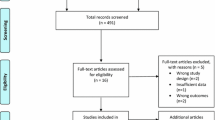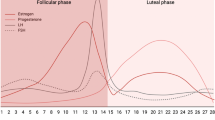Abstract
The effect was investigated of treadmill training of moderate intensity on the fatty acid-binding protein (FABP) content in relation to parameters of oxidative and glycolytic metabolism. To this end, the cytoplasmic FABP content and the activity of β-hydroxyacyl-coenzyme A dehydrogenase (HAD), citrate synthase (CS), and 6-phosphofructokinase (PFK) were measured in heart, fast-twitch extensor digitorum longus (EDL) and slow-twitch soleus muscles (SOL) of male Wistar rats. To investigate the influence of the amount of training (defined as the product of exercise duration, intensity and frequency), two training groups were created that differed in training frequency (HF, high frequency 5 days · week−1, n=9; LF, low frequency 2 days · week−1, n = 9; the exercise being 20 m · min−1 for 2 h with no gradient, over 6 weeks) and compared with SC, sedentary controls (n = 7). In heart muscle, the cytoplasmic FABP content was 34% higher in HF than in SC but was the same as in LF. The CS and HAD activities were no different in the three groups, suggesting that the capacity to oxidize fatty acids (FA) was not affected by training. The PFK activity was higher (43%) in HF, suggesting a shift towards carbohydrate utilization. The FABP content and HAD activity did not change in SOL and EDL after training whereas the CS activity increased (27%) in SOL and decreased (21%) in EDL in both training groups. In addition, PFK activity in EDL was much higher (113%) in the HF than in SC group. The HF training was associated with a fine-tuning of FA availability and use in heart muscle, and with a more efficient energy production. It is suggested therefore that cytoplasmic FABP could be an early marker of muscle adaptation to training in heart but not in skeletal muscle. The training reinforced the metabolic profile of the skeletal muscles, in particular that of the fast-twitch glycolytic muscle. We concluded that a large amount of training is needed when the effect on both oxidative and glycolytic parameters is to be studied.
Similar content being viewed by others
Author information
Authors and Affiliations
Additional information
Accepted: 18 October 1998
Rights and permissions
About this article
Cite this article
Zonderland, M., Bär, P., Reijneveld, J. et al. Different metabolic adaptation of heart and skeletal muscles to moderate-intensity treadmill training in the rat. Eur J Appl Physiol 79, 391–396 (1999). https://doi.org/10.1007/s004210050527
Issue Date:
DOI: https://doi.org/10.1007/s004210050527




